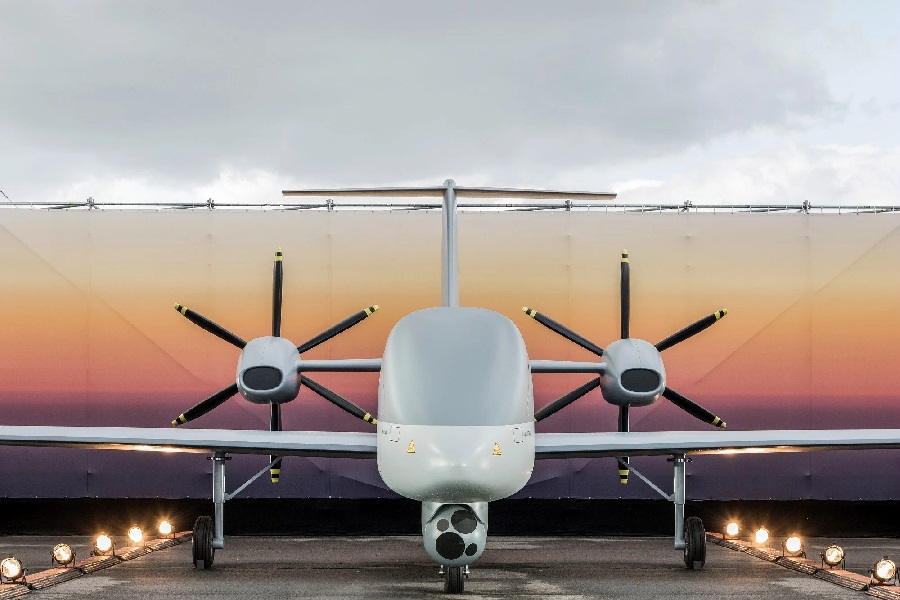This positive development is only partly attributable to increased deliveries of the Airbus aircraft family. The effect of an approximately 12% more favorable US dollar exchange rate was also significant. The total number of direct employees increased by 5,000 to 105,000 (2021: 100,000). This was announced by the German Aerospace Industries Association (BDLI).

“Aerospace is among the few industries in which Germany and Europe currently are world leaders and primed for the future. We intend to further strengthen this innovative capacity with the help of technological quantum leaps such as the planned climate-neutral ZEROe aircraft and the future European combat air system (FCAS). This includes the European Service Module (ESM) as the technological core of the Artemis mission, which is taking mankind to the moon again after many years – this time to stay. In this way, we can make a decisive contribution to preserving the values that are most important to our society: our democracy, our freedom and our prosperity, in a secure and sustainable future,” said Dr. Michael Schöllhorn, President of BDLI and CEO of Airbus Defence and Space.
Civil aviation – making Germany a hub for climate-neutral air travel
The largest segment, the civil aviation industry, again has seen a boost after the end of the coronavirus pandemic. Production of both medium-haul and long-haul aircraft is increasing – making a correspondingly positive impact on the medium-sized supplier industry throughout Germany.
Sales in 2022 amounted to €28 billion (previous year: €22 billion). In addition to higher deliveries, this increase was also boosted by the approximately 12% more favorable dollar exchange rate. The total number of direct employees came to 73,000 (2021: 69,000). Germany and Europe are leading in climate protection and civil aviation. The challenge now is to advance the development of climate-neutral aircraft and become the global hub of climate-neutral air travel. With its core competencies and its role as a partner in an extensive research and science network, Germany is in an excellent position to lead the way in the technologies and innovations required to achieve this. Now it is time to drive forward the infrastructure and production of climate-neutral fuels.
Political support from the German government provides indispensable stimulus for this development. The working group on climate-neutral aviation of Germany’s Federal Ministry of Economics and Climate Protection (BMWK) and the Federal Ministry for Digital and Transport (BMDV) is coordinating this task and pushing toward the target. Military aviation industry – a change is needed.
The military aviation industry recorded a slight increase in sales to €8.4 billion (2021: €7 billion), with employment also up slightly by 5% to 23,000 (2021: 22,000). In the current political situation, Germany and Europe more than ever need their own powerful and competitive military aviation industry to strengthen their sovereignty in the field of defense. To this end, domestic companies now need to benefit from a change through concrete orders. Instead of making decisions on the fly, the German military aviation industry needs a sustainable industrial strategy in conjunction with a technology strategy that enables ongoing, consistent further development of competencies.
The yardstick for entrepreneurial actions must be the operational readiness of the armed forces. The supporting pillars are the expansion of the national support capabilities and the rapid implementation of the FCAS project.
Space industry – to the moon, thanks to technology from Germany
Sales in the space industry also increased slightly to €2.6 billion (2021: €2.4 billion). The number of employees, on the other hand, has decreased by 3% to 9,000 (2021: 9,300). This is particularly due to the upcoming transition from Ariane 5 to the new Ariane 6 launch vehicle.
From rapid communications to disaster control, space travel today is an integral part of all industries and economic sectors and people’s constant companion in their everyday lives. And it holds a great fascination, not least in last year’s successful Artemis-I mission, in which technology “made in Germany” played a major role. In a few years, further Artemis missions will carry the first Europeans to the moon.
And space travel is regarded as a key critical infrastructure as well. Following the successful ministerial-level ESA council meeting at the end of 2022, the task now is to implement the planned European satellite constellation IRIS² and ensure Europe’s autonomous access to space on a permanent basis. Germany must be able to retain its role as an attractive partner in European and international programs. This requires increasing the space travel budget in the National Programfor Space and Innovation to an initial €500 million per year, to continue enabling technical program developments in the field.
For the implementation of these strategically important objectives, a future-oriented industrial strategy for space travel is also needed, which the BDLI is strongly committed to developing.
Investments in innovation pay off – high export ratio
Industry spending on research and development remains high, comprising a volume of almost €3 billion; this figure corresponds to 7% of the industry’s sales. The products of the German aerospace industry are in demand all over the world. Almost three quarters of the value created (73%) is exported.




























